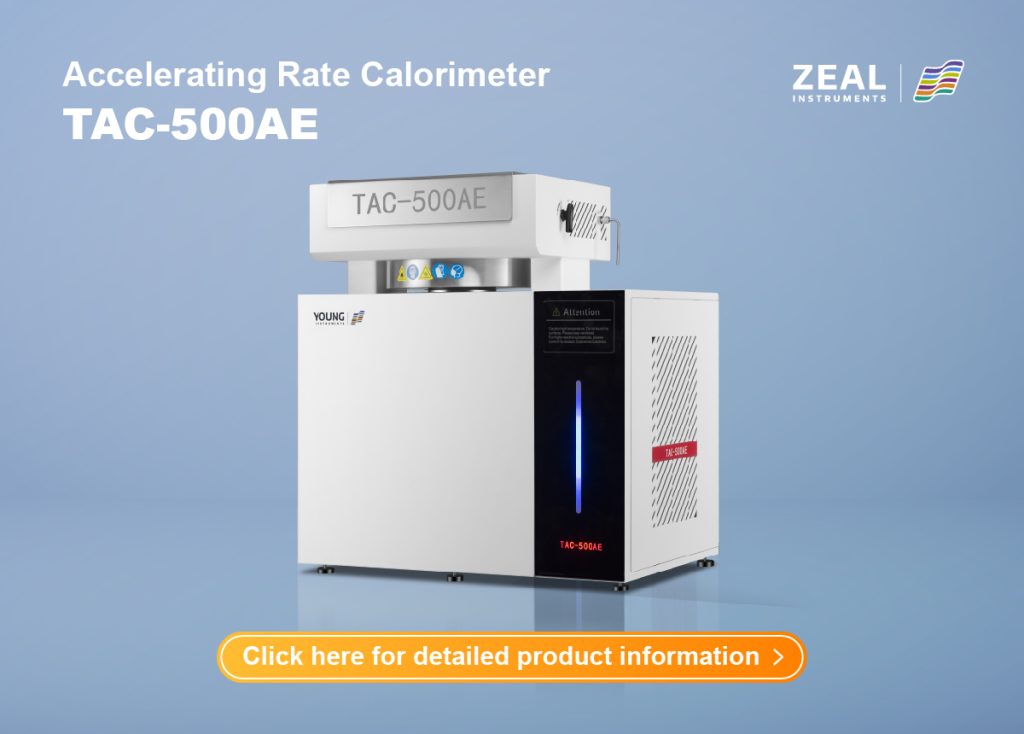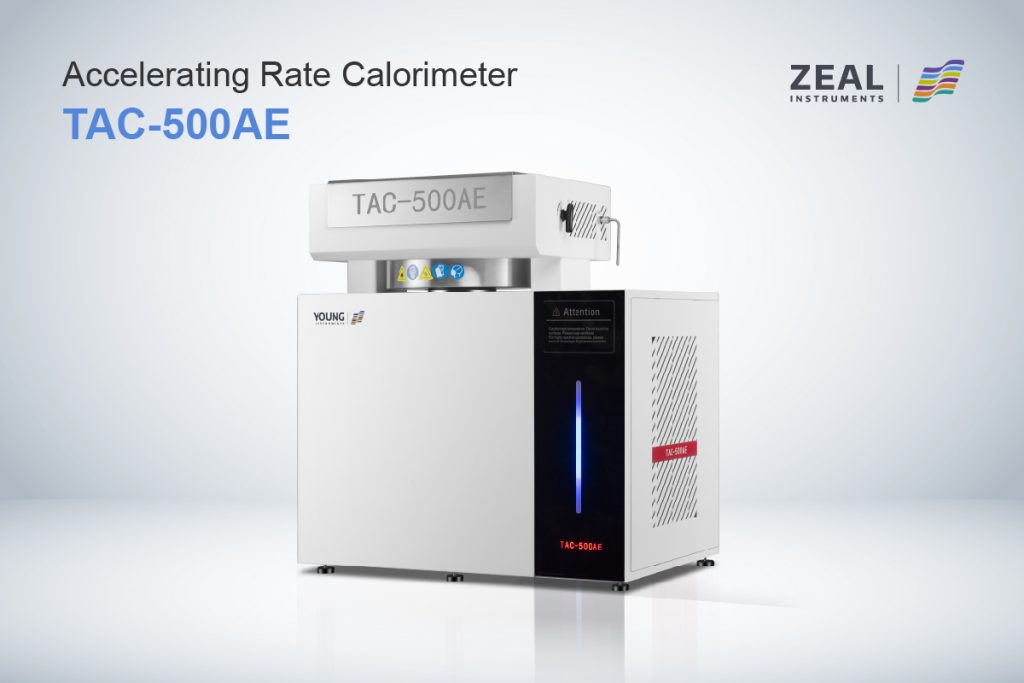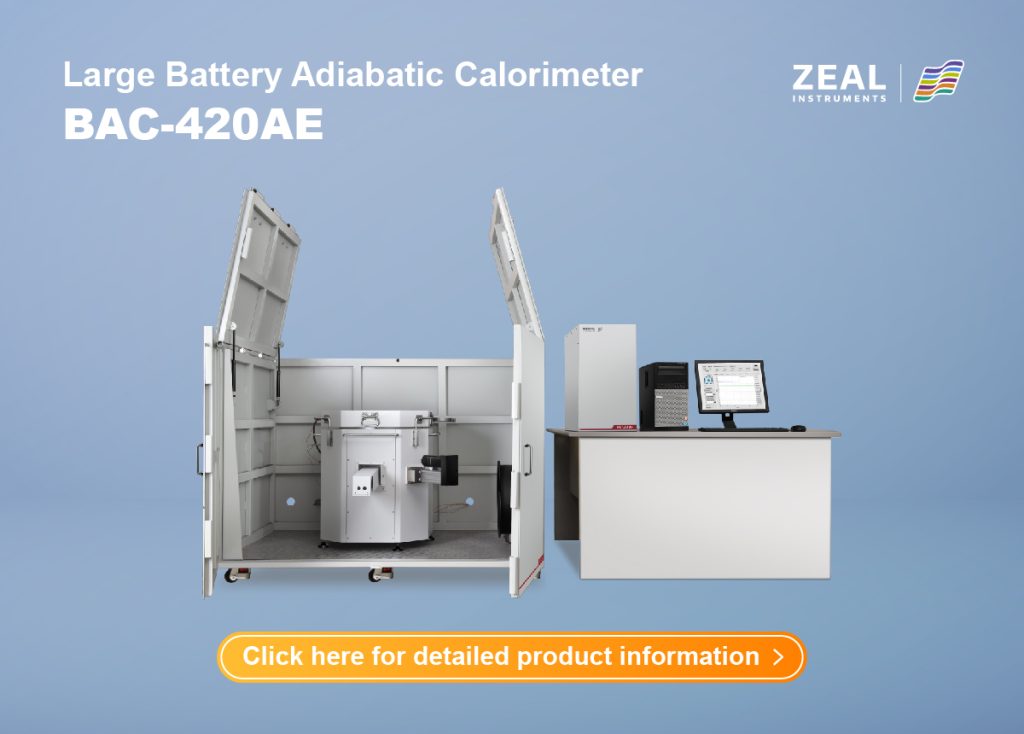Understanding Runaway Reactions and Their Safety Implications
In chemical manufacturing, runaway reactions represent one of the most critical safety hazards. These uncontrolled reactions, often occurring in fine chemical industries, can lead to dangerous consequences, including explosions. The primary risk in these reactions stems from process heat hazards, especially in exothermic reactions, where large amounts of heat are released. This blog will explore the causes of runaway reactions, how to assess potential thermal risks, and how advanced tools, like the Accelerating Rate Calorimeter, can help mitigate these dangers.

Causes and Consequences of Runaway Reactions
Excessive Heat in Exothermic Reactions
Exothermic reactions are those that release heat as a byproduct. When the amount of heat generated exceeds the system’s ability to dissipate it, the temperature of the reaction can increase uncontrollably. This temperature increase accelerates the reaction rate, generating even more heat in a self-sustaining loop, leading to a runaway reaction. The higher the heat generation rate, the greater the potential for the adiabatic temperature rise, and consequently, the severity of the incident.
Adiabatic Temperature Rise and Its Dangers
The concept of adiabatic temperature rise refers to the temperature increase in a system that occurs without any heat loss to the surroundings. In runaway reactions, this adiabatic rise can result in extreme temperatures, increasing the pressure within the system. Under such conditions, equipment failure or even catastrophic explosions can occur. The absence of proper thermal controls and safety measures in processes involving highly reactive substances poses significant hazards to personnel, equipment, and the environment.
Impact of Runaway Reactions on the Chemical Industry
Runaway reactions can have devastating consequences. In the chemical and pharmaceutical industries, these events can disrupt production, cause expensive damage, and endanger human lives. Therefore, thorough safety assessments and process optimization are essential in preventing runaway reactions. By analyzing the potential thermal hazards associated with raw materials, intermediates, and products, industries can take preventive measures to minimize risk.
Evaluating Thermal Risks in Chemical Reactions
Importance of Comprehensive Analysis
Before initiating any chemical process, it is crucial to conduct a full-spectrum analysis of the potential risks. This involves examining the raw materials, intermediates, and final products. By using sophisticated testing equipment like the adiabatic Accelerating Rate Calorimeter and differential scanning calorimetry (DSC), experts can evaluate thermal stability and identify any potential runaway reaction scenarios. These analyses provide essential data that companies can use to optimize their processes and improve safety protocols.
Role of the Accelerating Rate Calorimeter
The Accelerating Rate Calorimeter is a vital tool for evaluating the safety of chemical processes. It simulates self-accelerating reactions under uncontrolled conditions, providing precise thermodynamic and kinetic data. This information allows researchers and engineers to assess the stability of hazardous chemicals and the potential risks during production, storage, and transport. By understanding the heat release onset temperature, adiabatic temperature rise, and activation energy, industries can develop safer procedures and emergency response plans.
Adiabatic Accelerating Rate Calorimeter and Its Applications
The TAC-500AE is a highly recommended instrument for industries dealing with fine chemicals, pharmaceuticals, and other chemical processes. This Accelerating Rate Calorimeter model supports various testing modes such as Heating-Waiting-Search (HWS), isothermal mode, and constant rate scanning mode. It is equipped with professional data analysis software capable of automatically calculating key parameters like adiabatic temperature rise and pre-exponential factors. Moreover, the TAC-500AE can connect to inert gas systems for rapid cooling, ensuring both the safety and efficiency of experiments.

Preventing Thermal Runaway with Process Optimization
Identifying Heat Control Measures
Thermal runaway incidents can be prevented by identifying and implementing effective heat control measures during chemical processes. Through process safety analysis, companies can gather data about the thermal characteristics of each step in the reaction and devise ways to control temperature fluctuations. These measures may involve cooling systems, adjusting reactant concentrations, or modifying reaction conditions to reduce the risk of thermal hazards.
Emergency Response Systems for Runaway Reactions
When runaway reactions are identified as a potential risk, it is essential to have emergency response systems in place. This includes safety measures like pressure relief valves, emergency venting systems, and the use of inert gases to prevent explosions. The data gathered from tools like the Accelerating Rate Calorimeter can help companies design these systems, ensuring that they are prepared for any unforeseen incidents. Furthermore, incorporating simulation data into emergency management protocols allows for quicker and more accurate responses, minimizing potential damage.
Continuous Improvement in Process Safety
Process safety is a dynamic field that evolves as new data becomes available. The use of advanced tools like the TAC-500AE allows for continuous improvement in chemical processes by providing detailed thermal analysis. As more data is gathered, companies can refine their processes, enhance safety measures, and ensure compliance with industry standards. Regular safety assessments and process optimizations are crucial for reducing the risk of runaway reactions.
Advanced Tools for Runaway Reaction Analysis
Large Battery Adiabatic Calorimeter (BAC-420AE)
In addition to the TAC-500AE, the Large Battery Adiabatic Calorimeter (BAC-420AE) offers advanced functionality for analyzing thermal runaway in battery systems. The BAC-420AE integrates thermal, electrical, and mechanical testing methods, which are crucial for understanding battery behavior during charging and discharging. By measuring key parameters such as heat generation and thermal runaway initiation temperature, this instrument helps prevent battery failures and ensures safer battery design and usage.

Innovative Features of Modern Calorimetry Equipment
Modern calorimeters, such as the TAC-500AE, with a range of advanced features. These include the ability to connect to inert gas systems for rapid cooling, automated data analysis software, and compliance with international safety standards. The software integrated into these devices also enables emergency management assessments, which can streamline the evaluation of chemical process risks. With precise measurements of activation energy, reaction heat, and adiabatic temperature rise, these tools offer invaluable insights for industries focused on preventing runaway reactions.
Importance of Accurate Data in Risk Assessment
Accurate data is critical for assessing thermal hazards in chemical processes. Instruments like the TAC-500AE provide real-time analysis of critical parameters, enabling companies to make informed decisions about process safety. By utilizing thermodynamic calculation methods, industries can better understand the thermal behavior of mixtures, predict the onset of runaway reactions, and develop more effective safety protocols.
Conclusion: Mitigating Risks in Chemical Processes
Runaway reactions pose significant risks in the chemical industry, particularly in sectors involving fine chemicals, pharmaceuticals, and energy materials. By conducting thorough risk assessments and utilizing advanced tools like the Accelerating Rate Calorimeter, companies can identify and mitigate the potential hazards associated with thermal runaway. The key to preventing such catastrophic events lies in understanding the thermal properties of the materials involved, accurately assessing the risks, and implementing both preventive and emergency measures.






































